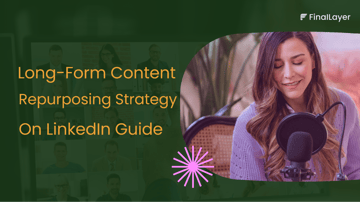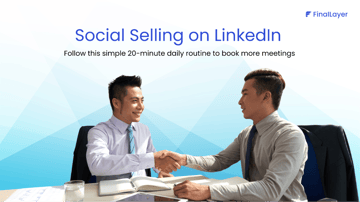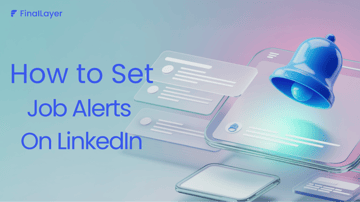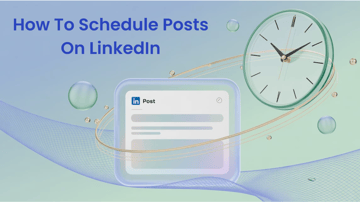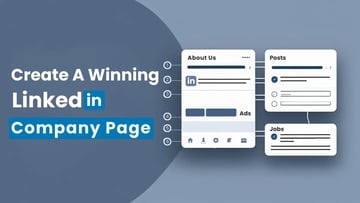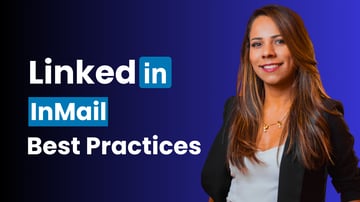So far, we've explored how to build a compelling personal brand on LinkedIn and mastered various platform features that help you establish your professional presence. Now, let's dive into one of LinkedIn's most powerful yet underutilized capabilities: job search.
LinkedIn has evolved far beyond a simple networking platform into the world's most sophisticated job search engine, with over million professionals competing for opportunities daily. Yet most job seekers barely scratch the surface of what LinkedIn's job search functionality offers, missing out on hidden job collections, advanced search techniques, and strategic application methods that could dramatically accelerate their career growth.
This comprehensive guide reveals the insider strategies that successful job seekers use to navigate LinkedIn's complex job search ecosystem. You'll discover how to optimize your existing profile for maximum recruiter visibility, master the Easy Apply feature without getting lost in the crowd, and leverage the professional relationships you've been building to unlock referral opportunities.
Whether you're actively job hunting or planning your next career move, these proven job search strategies will give you the competitive edge you need to stand out in today's crowded marketplace.
Understanding LinkedIn's Job Search Interface and Core Features
LinkedIn's job search functionality has evolved significantly, offering sophisticated tools that many job seekers never fully utilize. The platform's job search interface is designed to surface relevant opportunities while helping you organize and track your applications effectively.
Navigating the LinkedIn Jobs Tab
The LinkedIn Jobs tab serves as your command center for job discovery. When you click on the Jobs tab, you'll notice four distinct areas that deserve your attention. The main job feed displays personalized recommendations based on your profile, search history, and engagement patterns.
The interface dynamically adjusts based on your activity. For example, if you frequently search for marketing roles in San Francisco, LinkedIn's algorithm will prioritize similar opportunities in your feed. This personalization can work for or against you, depending on how well-optimized your profile is.
Understanding this dynamic nature helps you approach job searching more strategically. Instead of passively browsing, you can actively influence what LinkedIn shows you by engaging with relevant content and updating your profile with target keywords.
Exploring Job Collections - LinkedIn's Curated Opportunities
One of LinkedIn's newest and most underutilized features is "Explore with Job Collections." This tool curates job opportunities by industry, work type, and company size, helping you discover roles you might not find through traditional searching.
Job Collections organize opportunities into categories like "Remote Work," "Startup Jobs," "Fortune 500 Companies," and industry-specific collections. This feature is particularly valuable when you're open to exploring different career paths or want to see what's available beyond your usual search parameters.
For instance, if you're a marketing professional primarily looking at tech companies, exploring the "Healthcare Marketing" or "Non-Profit Marketing" collections might reveal opportunities you hadn't considered. These curated lists often include roles from companies that don't appear in your regular job feed.
Leveraging "Still Hiring" and "Recommended for You" Sections
The "Still Hiring" section highlights positions that remain open despite being posted weeks or months ago. This doesn't necessarily mean these are difficult-to-fill roles; sometimes excellent opportunities remain open due to specific requirements or selective hiring processes.
These positions can be goldmines for qualified candidates because they often receive fewer applications than newer postings. Companies posting in "Still Hiring" are typically more motivated to fill the position and may be more flexible with their requirements.
The "Recommended for You" section uses advanced algorithms analyzing your profile completeness, skills, experience, and even your LinkedIn activity to suggest relevant positions. The quality of these recommendations directly correlates with how well you've optimized your profile for your target roles.
To maximize the effectiveness of LinkedIn's job discovery features, watch this comprehensive tutorial that breaks down the essential strategies for navigating the Jobs tab and setting up effective job alerts:
Advanced LinkedIn Job Search Strategies and Techniques
Moving beyond basic job browsing requires understanding advanced search techniques that can dramatically improve your results. These strategies help you find hidden opportunities and target your search with precision.
Optimizing Search Filters and Keywords
LinkedIn's search filters can significantly refine your results when used strategically. Location-based searching goes beyond just city names, you can search by radius, specific regions, or even indicate your willingness to relocate.
Industry filtering helps you focus on sectors that align with your experience or interests. However, don't limit yourself too strictly. Sometimes great opportunities exist in adjacent industries that you might overlook.
Experience level filtering is crucial for targeting appropriate roles. If you're a mid-level professional, you might miss senior opportunities that you're actually qualified for if you only select "Mid-level" in the filters.
Date posted optimization gives you a competitive advantage. Applying to jobs within 24-48 hours of posting significantly increases your chances of getting noticed, as your application will be among the first recruiters review.
Setting Up Strategic Job Alerts
Job alerts are your secret weapon for staying ahead of the competition. Instead of checking LinkedIn daily, strategic alerts bring opportunities directly to your inbox when they're posted.
Create multiple targeted alerts rather than one broad alert. For example, if you're a software engineer, you might create separate alerts for "Frontend Developer," "React Developer," and "JavaScript Developer" to capture different variations of your target role.
Timing your alerts is crucial. Set them to notify you immediately or daily, not weekly. The job market moves fast, especially for desirable positions. Weekly alerts often mean you're seeing roles that have already received dozens of applications.
Manage your alerts carefully to avoid inbox overwhelm. Start with 3-5 highly targeted alerts and adjust based on the quality and quantity of opportunities you receive.
Share your insights about the topic by creating a LinkedIn post
How do you actually land a job using LinkedIn effectively?
You will have a chance to edit later
LinkedIn Application Methods and Best Practices
How you apply for jobs on LinkedIn can significantly impact your success rate. Understanding the different application methods and their strategic implications helps you choose the best approach for each opportunity.
Mastering LinkedIn's Easy Apply Feature
LinkedIn's Easy Apply feature promises convenience but comes with both advantages and drawbacks that every job seeker should understand. This one-click application method can be powerful when used correctly but can also hurt your chances if misused.
The primary advantage of Easy Apply is speed and volume. You can apply to multiple relevant positions quickly, increasing your overall visibility to recruiters. When your LinkedIn profile is well-optimized, Easy Apply submissions can be surprisingly effective.
However, Easy Apply also has significant drawbacks. Your application may get lost in a sea of other Easy Apply submissions, making it harder to stand out. Additionally, you have limited ability to customize your application for the specific role.
The key to Easy Apply success lies in profile optimization. Since recruiters primarily see your LinkedIn profile when you use Easy Apply, every section must be polished and keyword-optimized for your target roles.
Direct Company Applications and External Links
Many LinkedIn job postings redirect you to company websites for the actual application. This presents both opportunities and challenges for job seekers.
External applications often provide more space to customize your submission. You can upload tailored resumes, write specific cover letters, and provide additional information that LinkedIn's Easy Apply doesn't accommodate.
However, external applications require more effort to track and follow up on. Create a system to monitor these applications, including saving job descriptions and noting application dates.
When deciding between Easy Apply and external applications, consider the role's importance to you. For dream jobs or highly competitive positions, taking the extra time for external applications often pays off.
Strategic Cover Letter Integration
Cover letters remain important in the LinkedIn application process, even when they're optional. A well-crafted cover letter can differentiate you from other candidates, especially in competitive markets.
The key is efficiency without sacrificing personalization. Develop templates that you can quickly customize for different applications. Focus on specific achievements and how they relate to the target role.
For networking-focused applications, your cover letter might emphasize mutual connections or shared interests rather than just qualifications. This approach can be particularly effective when reaching out to hiring managers directly.
LinkedIn Profile Optimization for Job Search Success
Your LinkedIn profile is your always-on resume, working to attract opportunities even when you're not actively searching. Optimization goes far beyond just filling out every section, it requires strategic thinking about how recruiters and hiring managers discover and evaluate candidates.
Essential Profile Elements for Job Seekers
Seven critical profile sections directly impact your job search success. Your headline is your first impression and should go beyond just listing your current job title. Instead, create a value proposition that includes your expertise, target role, and key skills.
For example, instead of "Marketing Manager at XYZ Corp," try "Digital Marketing Leader | Driving 40% Growth Through Data-Driven Campaigns | SEO & PPC Expert." This headline tells a story and includes searchable keywords.
Your summary section should read like a compelling elevator pitch. Start with your professional identity, highlight key achievements with specific numbers, and conclude with your career goals. Keep paragraphs short and use bullet points to improve readability.
The experience section needs strategic keyword integration without appearing stuffed. Use industry terminology naturally and include quantifiable achievements. Remember, recruiters often search for specific skills and experience combinations.
Keyword Strategy and LinkedIn Algorithm Understanding
LinkedIn's job matching algorithm analyzes your profile content, activity, and connections to surface relevant opportunities. Understanding how this algorithm works helps you optimize for better visibility.
Keyword research for LinkedIn profiles differs from traditional SEO. Focus on terms that appear frequently in your target job descriptions. Include these keywords naturally throughout your profile, not just in one section.
Skills matching is particularly important. LinkedIn directly compares your listed skills with job requirements. Regularly update your skills section and seek endorsements for your most important competencies.
Industry-specific keywords vary significantly. A software developer's profile should emphasize programming languages and technical frameworks, while a marketing professional should focus on campaign types and marketing tools.
Visual Elements and Professional Presentation
Visual elements significantly impact first impressions. Your profile photo should be professional, recent, and show your face clearly. Avoid casual photos or images with other people.
Your background image offers additional branding opportunity. Instead of LinkedIn's default background, use an image that reinforces your professional brand or industry expertise.
For portfolio-based professions, LinkedIn's media features allow you to showcase your work directly on your profile. This can include presentations, project summaries, or work samples that demonstrate your capabilities.
Networking and Direct Outreach Strategies
Networking on LinkedIn goes beyond collecting connections. Strategic networking creates opportunities, provides industry insights, and can lead directly to job offers through referrals and insider information.
Building Strategic Connections for Job Opportunities
Focus on quality over quantity when building your LinkedIn network. Target professionals in your industry, employees at companies you're interested in, and thought leaders whose content provides value.
When sending connection requests, always include a personalized message. Generic connection requests are often ignored, especially by busy professionals. Mention shared connections, interests, or specific reasons for wanting to connect.
Alumni networks are goldmines for professional connections. Search for alumni from your university working at target companies or in your desired role. Shared educational background provides natural conversation starters.
Industry groups and professional associations offer networking opportunities beyond your immediate network. Participate in discussions, share insights, and connect with active group members who share your professional interests.
Direct Messaging and Informational Interviews
Direct messaging on LinkedIn requires finesse. Your messages should be concise, professional, and provide clear value to the recipient. Avoid immediately asking for favors or job referrals.
Informational interviews are powerful tools for building relationships and gaining industry insights. Approach professionals whose career paths interest you and ask for brief conversations about their experience and advice.
When requesting informational interviews, be specific about your interest in their background and respectful of their time. Offer to accommodate their schedule and suggest a brief 15-20 minute conversation.
Follow up on networking conversations with thank-you messages and updates on your progress. This maintains relationships and keeps you top-of-mind for future opportunities.
Engaging with Company Content and Thought Leadership
Strategic engagement with company content increases your visibility to hiring managers and recruiters. Comment thoughtfully on posts from companies you're interested in, adding value to the conversation rather than just generic praise.
Sharing relevant industry content positions you as a knowledgeable professional in your field. Add your own insights when sharing articles or posts, demonstrating your expertise and perspective.
Building thought leadership takes time but pays dividends in attracting opportunities. Write LinkedIn articles about industry trends, share lessons learned from projects, or provide insights on professional challenges.
Participate in LinkedIn industry discussions and professional groups. Regular, valuable contributions increase your visibility and establish you as an engaged professional in your field.
Navigating Modern Hiring Technology and ATS Systems
Understanding how modern hiring technology works gives you a significant advantage in today's job market. Applicant Tracking Systems and AI-powered tools are increasingly common, affecting how your applications are processed and evaluated.
Understanding Applicant Tracking Systems (ATS)
Applicant Tracking Systems process the majority of job applications today, including many submitted through LinkedIn. These systems scan resumes and profiles for keywords, qualifications, and formatting before human recruiters ever see them.
ATS compatibility affects both your LinkedIn profile and any resumes you upload. Use standard formatting, include relevant keywords naturally, and ensure your documents are easily readable by automated systems.
The integration of AI in hiring processes is accelerating. Modern ATS systems can analyze not just keywords but also context, making it even more important to craft authentic, relevant content rather than just keyword-stuffing.
Understanding how these systems work helps you optimize your applications without compromising authenticity. Focus on naturally incorporating industry terminology and relevant skills throughout your profile and application materials.
Beating the Algorithm - LinkedIn's Job Matching Technology
LinkedIn's job matching algorithm considers multiple factors when determining which opportunities to show you and which candidates to surface to recruiters. Understanding these factors helps you optimize your profile and activity for better visibility.
Profile completeness significantly impacts your visibility. LinkedIn's algorithm favors complete profiles with rich content, regular activity, and strong engagement. Incomplete profiles are less likely to appear in recruiter searches.
Your activity on LinkedIn influences what opportunities you see and how you're perceived by the algorithm. Regular engagement with relevant content, updates to your profile, and professional interactions all signal to LinkedIn that you're an active professional.
Premium features can enhance your job search capabilities, but they're not necessary for success. Focus on optimizing your free profile and activity before considering premium upgrades.
Application Tracking and Follow-Up Strategies
Organizing your job search activities is crucial for managing multiple applications, tracking responses, and maintaining professional relationships throughout the process.
Organizing Your LinkedIn Job Search Campaign
Create systems to track your applications, including the company, position, application date, and method used. This helps you avoid duplicate applications and enables strategic follow-up.
Consider using spreadsheets or job search apps to manage your campaign. Include columns for job descriptions, application status, follow-up dates, and any networking contacts at each company.
Set realistic timelines and expectations for your search. The job market varies by industry, experience level, and economic conditions. Plan for a potentially longer search while hoping for quick results.
Regular review of your job search metrics helps you identify what's working and what needs adjustment. Track your application-to-response ratio, interview conversion rates, and the effectiveness of different application methods.
Professional Follow-Up Techniques
Appropriate follow-up can differentiate you from other candidates, but timing and approach are crucial. Generally, wait 1-2 weeks after applying before following up, unless the job posting specifies a different timeline.
Your follow-up messages should be brief, professional, and add value. Mention specific aspects of the role that excite you or share relevant insights about the company or industry.
LinkedIn makes follow-up easier by allowing you to see when hiring managers view your profile. If you notice activity from someone at a company where you've applied, consider reaching out with a thoughtful message.
Building relationships even when applications are unsuccessful sets you up for future opportunities. Thank interviewers for their time, express continued interest in the company, and ask to be considered for future openings.
Continuous Improvement and Strategy Refinement
Analyzing your job search results helps you identify patterns and optimize your approach. If you're getting interviews but no offers, focus on interview preparation. If you're not getting interviews, revisit your profile optimization and application strategy.
Market conditions change, and LinkedIn regularly updates its features and algorithms. Stay current with platform changes and adjust your strategies accordingly.
Building long-term career development habits extends beyond your immediate job search. Regular networking, continuous learning, and profile maintenance create ongoing opportunities throughout your career.
LinkedIn Job Search Privacy and Professional Considerations
Conducting a job search while employed requires careful balance between visibility and discretion. LinkedIn offers several features to help you search confidentially while maintaining professional relationships.
Conducting Confidential Job Searches
LinkedIn's privacy settings allow you to signal interest in opportunities without alerting your current employer. The "Open to Work" feature can be set to visible only to recruiters, not your existing network.
Private mode lets you browse profiles and company pages without leaving a trail. This is particularly useful when researching companies or checking on competitors without revealing your interest.
Be strategic about your LinkedIn activity during a job search. Sudden changes to your profile or unusual activity patterns might signal to colleagues that you're looking for new opportunities.
Consider the timing of profile updates and new connections. Gradual improvements to your profile appear more natural than sudden, dramatic changes that might raise questions.
Professional Etiquette and Best Practices
Maintaining professionalism throughout your search preserves relationships and protects your reputation. Even when frustrated with the job search process, keep your LinkedIn activity positive and professional.
Handle multiple job offers and interviews with transparency and respect. If you need to delay decisions or decline opportunities, communicate clearly and promptly.
Graceful rejection helps maintain professional relationships. Thank everyone involved in the process and express interest in future opportunities when appropriate.
Building a positive professional reputation during your search creates long-term career benefits. People remember how you conducted yourself during challenging times.
Advanced Strategies for Competitive Job Markets
In highly competitive markets, standard job search approaches may not be sufficient. Advanced strategies help you differentiate yourself and access opportunities that others miss.
Standing Out in Saturated Markets
Differentiation requires clear value propositions that highlight your unique combination of skills, experience, and achievements. Generic profiles and applications get lost in competitive markets.
Develop portfolio pieces that demonstrate your capabilities concretely. This might include case studies, project summaries, or examples of your work that hiring managers can quickly understand.
Building credibility through recommendations and endorsements provides social proof of your capabilities. Request recommendations from colleagues, clients, or supervisors who can speak specifically to your achievements.
Consider creating content that showcases your expertise. LinkedIn articles, industry insights, or professional commentary can position you as a thought leader in your field.
Industry-Specific LinkedIn Strategies
Different industries have distinct LinkedIn cultures and expectations. Technology companies might expect more technical details in profiles, while creative industries might prioritize visual portfolios.
Research industry-specific groups and associations on LinkedIn. Active participation in relevant professional communities increases your visibility within your target industry.
Seasonal and cyclical considerations affect different industries differently. Understanding these patterns helps you time your job search for maximum effectiveness.
Tailor your approach based on company size and culture. Startups might appreciate more casual, direct communication, while large corporations might require more formal approaches.
Conclusion
Mastering LinkedIn job search requires understanding both the platform's technical capabilities and the human elements of professional networking. Success comes from combining strategic profile optimization with authentic relationship building and systematic application management.
The key takeaways from this comprehensive guide include optimizing your profile for discoverability, leveraging advanced search techniques to find hidden opportunities, understanding how modern hiring technology affects your applications, and building genuine professional relationships that create long-term career value.
Remember that job searching is a marathon, not a sprint. Consistent effort, continuous learning, and strategic patience typically yield better results than frantic, unfocused activity. Use these strategies as a foundation, but adapt them to your specific industry, experience level, and career goals.
LinkedIn will continue evolving, but the fundamental principles of professional networking, clear communication, and value creation remain constant. Focus on building authentic professional relationships and providing value to your network, and opportunities will naturally follow.

